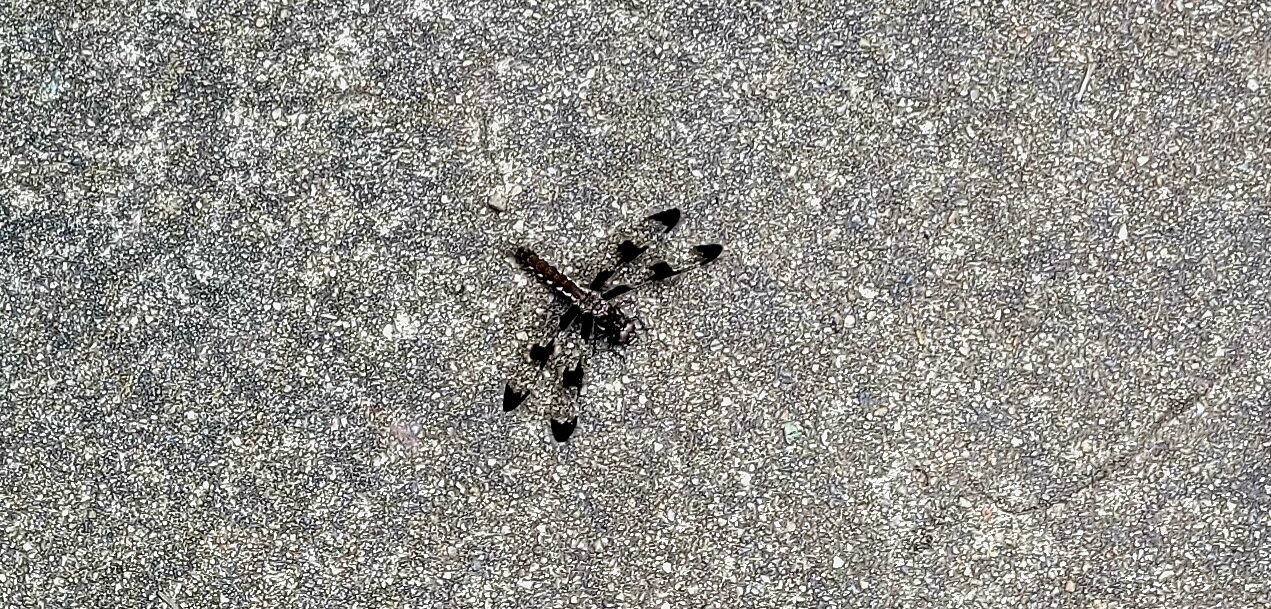Yesterday, when walking outside to my car, I noted this black spotted dragonfly on my sidewalk. I thought it was odd, since I’m not near any bodies of water . I was, also, able to get up close enough to take a photograph of the insect.
After checking a bit online, I believe this dragonfly is a Twelve-Spotted Skimmer Dragonfly. Apparently, this is a common dragonfly to see in my area.
General Information on a Twelve-Spotted Skimmer Dragonfly
Twelve-spotted skimmers are known to be a robust and fast dragonfly. They have a total of 12 black spots on the male. Between the black spots are eight bright white spots. However, the females and immature males have the twelve brownish-black spots but no white spots.
Of course, I am not an expert at identifying insects, but I believe the photographs on today’s blog are of a female or immature male of the species.
Adult skimmers feed on small insects and are usually found near sources of water. Females lay their eggs in ponds, lagoons or lakes. Then, the eggs hatch into naiads. At some point, the naiads crawl out the water and molt into winged adults. Then, the life cycle starts again.

The Twelve-spotted Skimmer Dragonfly is most active in the summer.
I remember growing up, we always had a small plastic pool which we filled to the brim with water. When we got a little older, we had a small above the ground pool. We loved it and were in it all summer long. But we were always “dive bombed” by those large bright red and orange dragonflies. They were constantly trying to get into our pool water.
Of course, we were having no such visitors, so we would splash some water at them with the hope they would go away. They did fly away; however, they always came back. Overnight, sometimes we would find a dead orange-red dragonfly in pool water.
Ending Notes on Today’s Blog
So today, when I came back from shopping, the dragonfly was gone.
It’s always, interesting to think about nature and what it was actually doing on my sidewalk.
Enjoy the warm day, pleasant blue sky, and nature.
Resource Sites: www.insectidentification.org

